
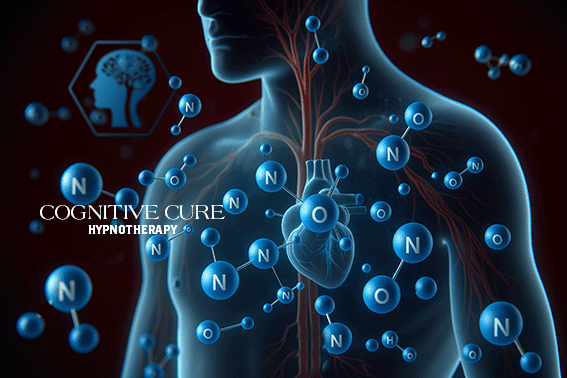
The Incredible Power of NO
Nitric oxide (NO) is a signaling molecule produced in the nasal passages that plays a role in calming the nervous system—something especially valuable in both trauma recovery and hypnosis. Slow nasal breathing, like 6-6 breathing, increases nitric oxide and moves the body out of fight-or-flight and into a parasympathetic, trance-friendly state. This helps steady the heart, improve heart-rate variability, and create a sense of internal safety that supports hypnotic work.
Because nitric oxide naturally opens the airways and improves circulation, slow nasal breathing also encourages deeper, diaphragmatic breathing. This can ease breathlessness and reduce panic, allowing clients to relax as they enter hypnosis.
Slow breathing activates the baroreflex, which helps regulate blood pressure and quiets stress signals. This reduces sympathetic overactivation and makes it easier to stay in the present rather than slipping into old trauma patterns—an ideal foundation for hypnotic change.
It also rebuilds interoceptive awareness, the ability to sense the body from within. Trauma can disrupt this connection, but 6-6 breathing offers a gentle way to reconnect with the rhythm of the breath and heartbeat, helping clients settle into trance more comfortably.
By lowering hypervigilance, nitric-oxide-rich breathing can even support better sleep. Overall, 6-6 breathing not only calms the stress response but also creates the internal conditions that make hypnosis smoother, deeper, and more effective.
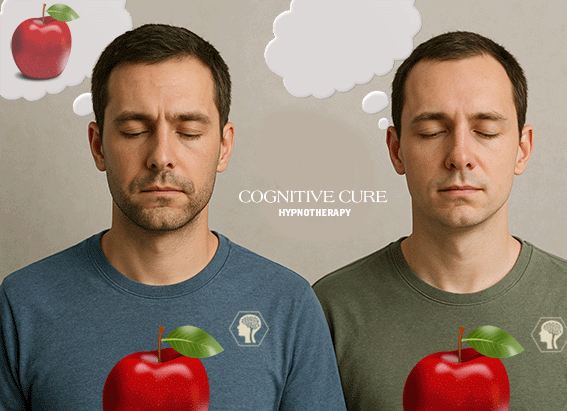
Aphantasia Appreciation
Aphantasia is often described as the inability to visualize images in the “mind’s eye,” but its impact can extend well beyond sight. For some individuals, the absence of internal imagery includes other sensory modalities as well—such as difficulty recalling sounds, smells, textures, or even the internal sense of movement. In clinical terms, this reflects a broader reduction in sensory imagery, meaning the brain simply doesn’t generate those internal simulations that many people take for granted. This variation isn’t a sign of cognitive impairment; rather, it’s a different way the brain processes and retrieves information.
This difference can also influence autobiographical memory—the ability to mentally revisit past experiences. Many people with aphantasia report that their memories feel more conceptual than sensory, as though they “know” what happened without re-experiencing it vividly. While this can create a sense of distance from past events, it can also be protective, reducing the emotional intensity tied to difficult memories. Understanding aphantasia in this broader context helps highlight the diverse ways minds function and reminds us that there is no single standard for how memory or imagination “should” work.
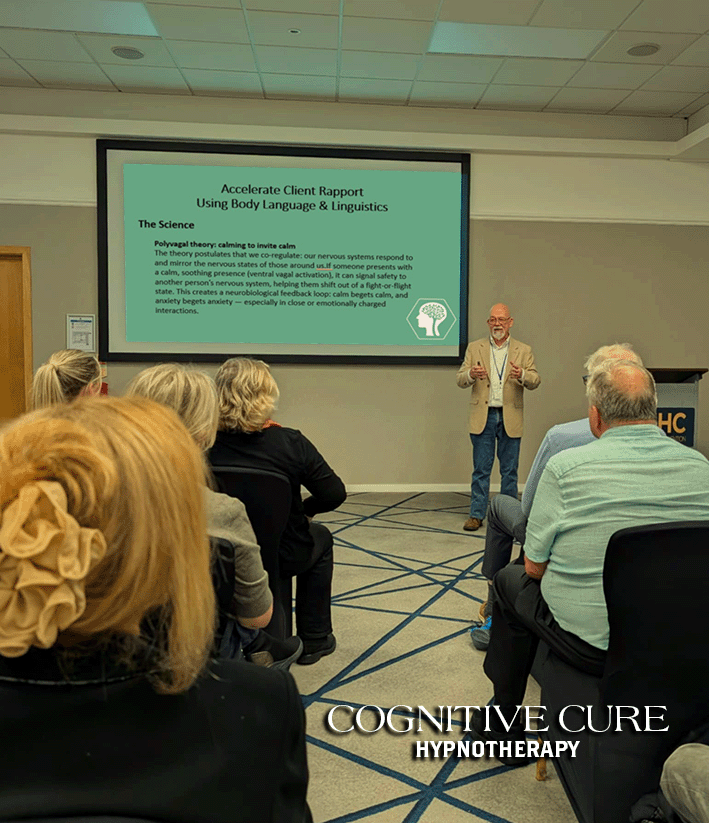
UKHC 2025
I had a very positive response to my talk, ‘How to Accelerate Client Rapport Using Body Language and Linguistics’. My book, ‘The Hidden Language of Rapport’ (Available on Amazon) sold incredible well too. Altogether a very productive weekend.
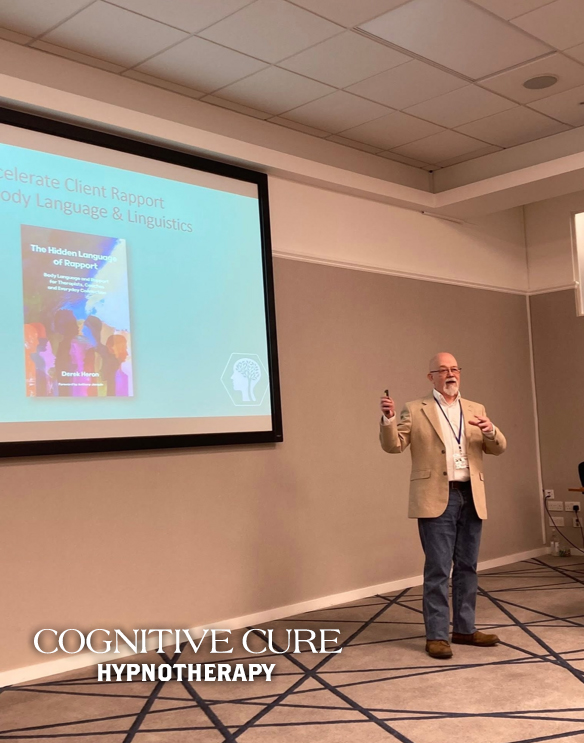
UKHC KEYNOTE
I have just returned from the UK Hypnosis Convention where I was invited to speak. The UK Hypnosis Convention (UKHC) is a large, prestigious, and science-based event for hypnosis professionals, researchers, and enthusiasts. It features a wide range of presentations and workshops with a focus on scientific research and evidence-based practices. I flew back from London a matter of hours ago. I will post more about my adventure in my next blog…
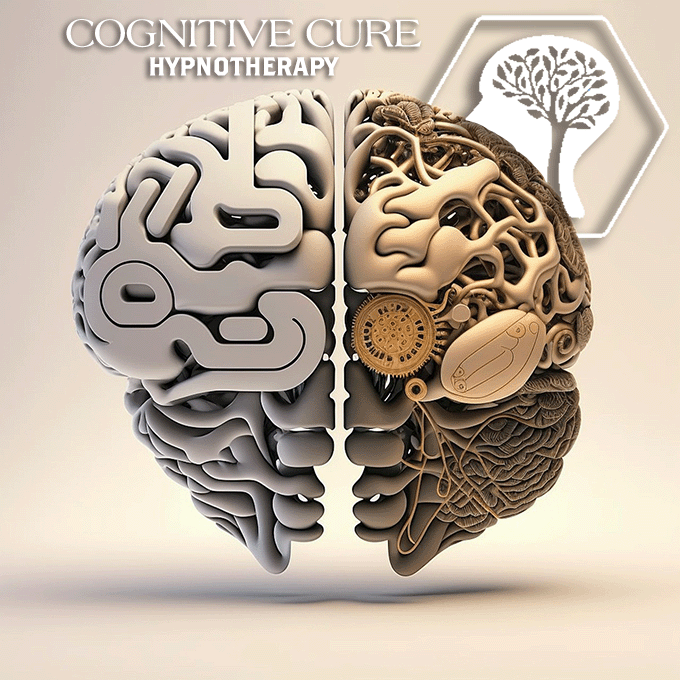
FUTURE FOCUS
The future of hypnotherapy is looking increasingly scientific, with growing evidence from neuroscience helping us understand how and why it works. Modern brain imaging techniques, such as fMRI, have shown that hypnosis can change activity in areas of the brain linked to attention, perception, and emotion regulation. This means hypnosis isn’t about “mind control” or “tricks,” but rather a focused mental state where the brain becomes more receptive to positive suggestions and new ways of thinking. As research continues, hypnotherapy is gaining recognition as a legitimate, evidence-based approach to addressing anxiety, pain, trauma, and even certain medical conditions.
What’s especially exciting is how hypnotherapy is being integrated into mainstream healthcare and psychology. Many clinicians now use hypnosis alongside cognitive-behavioral therapy (CBT), mindfulness, and other therapeutic methods to enhance results. As our understanding of neuroplasticity — the brain’s ability to rewire itself — grows, hypnotherapy is likely to play an even bigger role in helping people create lasting mental and emotional change. In the coming years, we may see hypnosis move from the fringes of alternative therapy to a respected, science-backed tool for healing and personal growth.
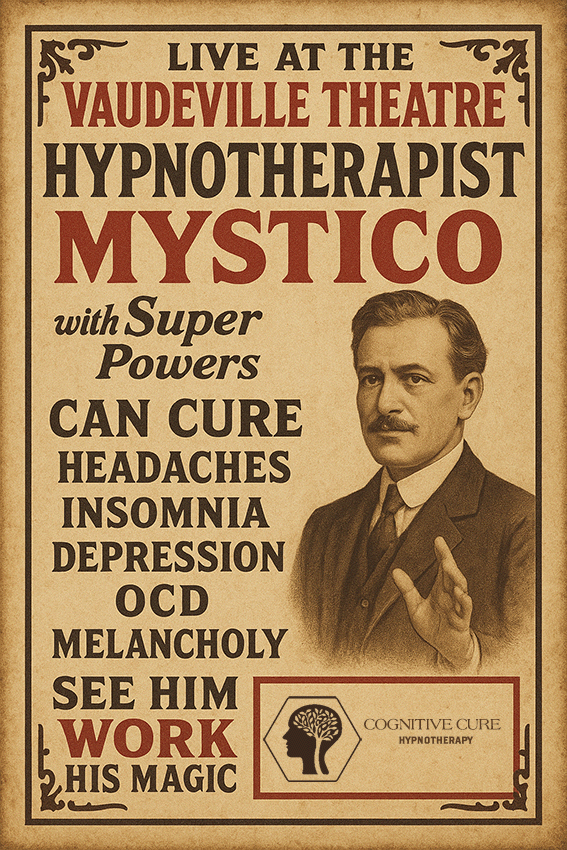
NOT CAN? BUT HOW?
Can Everyone Be Hypnotized?
We’ve all seen those TV shows or stage acts where someone gets “hypnotized” and ends up doing something funny or unexpected — which makes a lot of people wonder: is that real? And more importantly, could that happen to me? The truth is, almost everyone can experience some level of hypnosis, but not everyone goes into a deep trance the same way. Hypnosis isn’t about giving up control or being gullible — it’s actually about focus, imagination, and the ability to relax into a guided state of awareness. Some people are naturally more responsive because they can easily get absorbed in daydreams, movies, or creative thoughts. Others may find it takes a bit more time or trust to reach that same level of focus, and that’s perfectly normal.
Hypnotic susceptibility — that’s the technical term for how easily someone can be hypnotized — varies from person to person, much like musical ability or artistic talent. About 10–15% of people are highly responsive to hypnosis, while most of us fall somewhere in the moderate range. What’s important to know is that you don’t have to be “deeply hypnotized” to benefit from hypnotherapy. Even lighter trance states can help calm anxiety, reduce unwanted habits, improve sleep, and increase self-awareness. A skilled hypnotherapist tailors the process to your comfort level, guiding you toward a state that feels natural and safe. So rather than asking “Can I be hypnotized?”, a better question might be “What kind of hypnotic experience works best for me?” Because in the end, hypnosis isn’t about control — it’s about cooperation between your conscious and subconscious mind.
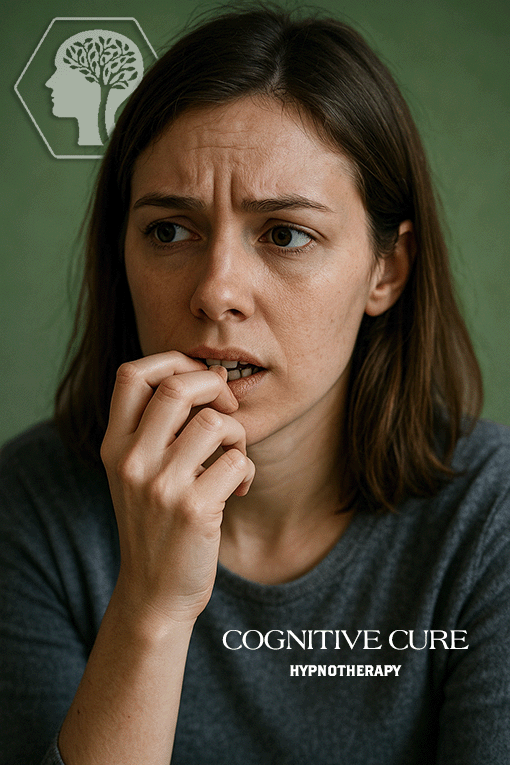
FREEDOM FROM PHOBIAS
Ever wondered why it’s so hard to break a habit, even when you really want to? Whether it’s biting your nails, reaching for that extra cookie, or scrolling endlessly before bed, habits live deep in the subconscious mind — the part of your brain that runs on autopilot. That’s where hypnotherapy comes in. Instead of battling your habits with sheer willpower, hypnotherapy gently guides your subconscious toward more positive patterns. It’s like updating the “software” running quietly in the background so your conscious mind doesn’t have to work so hard to stay on track.
During a hypnotherapy session, you’re not asleep or out of control — you’re in a deeply relaxed state, fully aware, but open to suggestion. In that calm mental space, a hypnotherapist can help you reframe old thought loops and introduce healthier responses. Over time, those subtle shifts start to show up in your daily life — suddenly, the craving fades, the urge weakens, and you realize you’re effortlessly doing what once felt impossible. It’s a surprisingly gentle yet powerful way to change from the inside out.
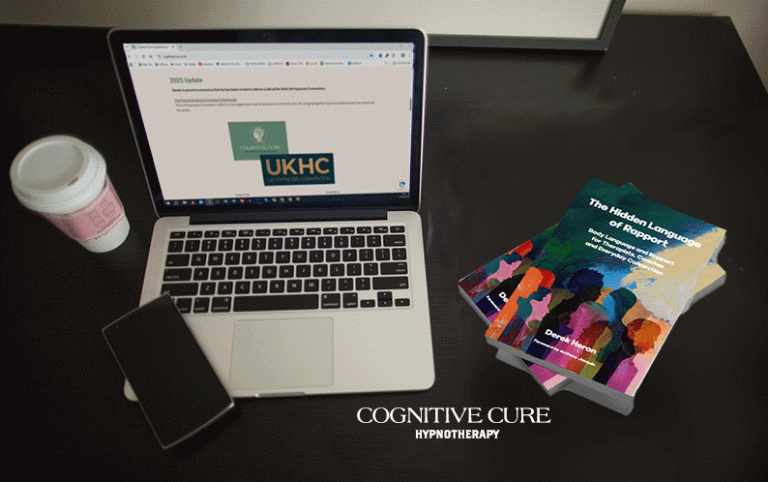
BLATANT BOOK PROMOTION
The Hidden Language of Rapport:
Body Language and Rapport for Therapists, Coaches and Everyday Connection
Available on Amazon NOW!!!!!
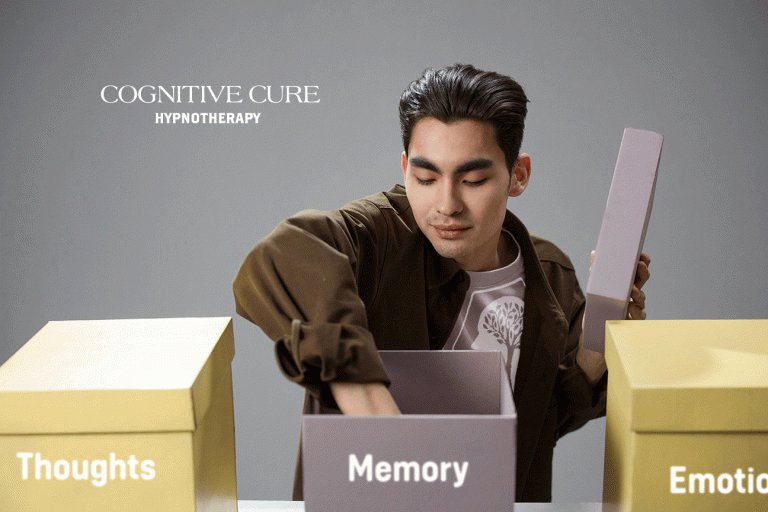
Miracle Memory Moment
Clients come to see me for all sorts of things. PTSD, anxiety confidence, phobias and insomnia are the most common issues that I deal with. However I recently had a client contact me with an unusual issue. He had lost something very valuable. The client had misplaced something in a moment of chaos. There was a lot going on in this clients life that with all the distractions he simply could not recall what he had done with his treasured belonging.
Over the months that followed he visited many different hypnotherapists in an attempt to recall the memory. Sadly no one as able to help him discover what he had done with the lost item. After a chance online encounter he told me his story and I offered to help.
My client had two hypnotherapy sessions with me. The day after the second session, I received an email from a very grateful gentleman, the memory and location had back to him as clear as day. Job done.

A QUICK NOTE…
Just a quick note from me this Sunday — there won’t be a full blog post this week, and I wanted to explain why.
As many of you know, running a therapy practice involves a lot more than just time in the therapy room. There’s preparation, reflection, admin (of course!), and all the other bits that keep a self-employed practice running smoothly. On top of that, I’m currently juggling two exciting projects: writing my book and preparing my talk for the 2025 UK Hypnosis Convention, where I’ve been invited to speak as a guest.
Between all of this, my week has been wonderfully full but a little short on breathing space. Rather than rush out a post for the sake of it, I’d rather take this week to pause, focus, and come back next Sunday with something thoughtful and worth your time.
Thank you, as always, for your understanding and continued support — it means a lot. I’ll be back soon with some reflections and perhaps a few behind-the-scenes stories from these projects as they unfold.
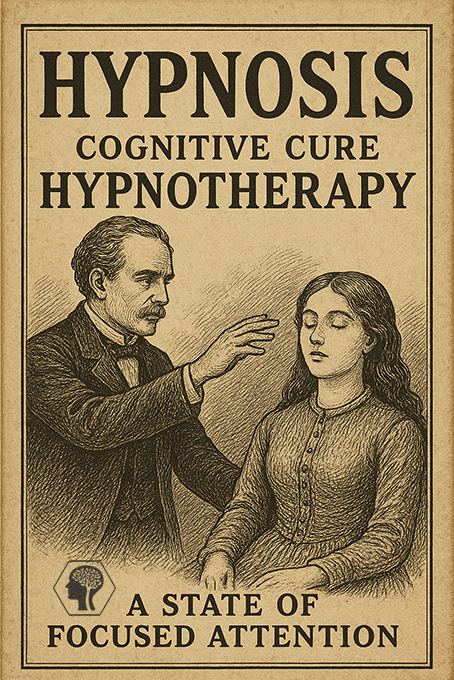
THE BIG QUESTION
What is Hypnosis? Is it woo-woo nonsense? When most people think of hypnosis, they picture someone swinging a pocket watch and putting people under a “spell.” In reality, hypnosis is much more grounded in science than stage shows make it seem. It’s a state of focused attention and deep relaxation where your brain becomes more open to positive suggestions. Far from being “mind control,” you stay aware the whole time—you just get better at tuning out distractions and letting your imagination influence your experience. That’s why hypnosis has been used in medicine to help with pain, anxiety, phobias, sleep problems, and even habits like smoking.
What’s happening in the brain during hypnosis is fascinating. Imaging studies show that the prefrontal cortex—the part that usually filters and monitors everything—quiets down, while the anterior cingulate cortex, which helps us stay focused, ramps up. Meanwhile, the default mode network, the system tied to daydreaming and self-reflection, takes a step back. This shift means you become less self-conscious and more immersed in the moment. Even more impressive, hypnosis can change how the brain processes sensations: for example, when people are told under hypnosis that pain will lessen, pain-related areas of the brain show reduced activity, almost as if the pain truly isn’t there.
So, in simple terms, hypnosis creates a kind of mental “sweet spot” where attention narrows, imagination becomes vivid, and suggestions take on surprising power. It’s not magic, but it can feel magical when the brain responds as if imagination were reality. No wonder hypnotherapy has found its way into hospitals, therapy rooms, and wellness practices—it taps into a natural state of mind that blends focus, openness, and relaxation in a way that everyday thinking just can’t.
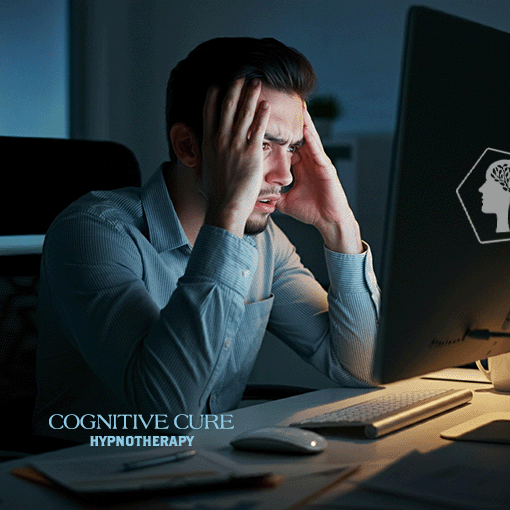
FOCUS ON STRESS
In today’s fast-paced world, stress has become an almost constant companion, often manifesting as tension, poor sleep, or difficulty focusing. While traditional strategies such as exercise and mindfulness can be helpful, many individuals are turning to hypnotherapy as a complementary approach to managing stress. Hypnotherapy involves guiding a person into a relaxed, focused state where the subconscious mind becomes more receptive to positive suggestions. In this state, individuals can reframe unhelpful thought patterns, release mental blocks, and cultivate healthier responses to daily challenges.
Research suggests that hypnotherapy may help reduce physiological stress markers, such as elevated heart rate and muscle tension, while promoting a sense of calm and control. Unlike stage hypnosis often portrayed in media, therapeutic hypnosis is a collaborative and safe process, where the client remains aware and empowered. Many people who undergo hypnotherapy report improved sleep, reduced anxiety, and an enhanced ability to cope with stressors. While it is not a quick fix, hypnotherapy can be a valuable tool in building long-term resilience and fostering a healthier relationship with one’s mind and body.
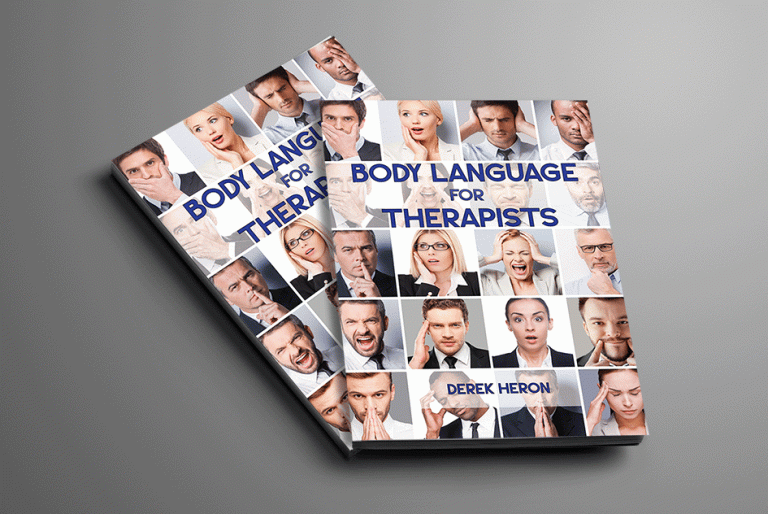
COMING SOON…
I’ve written a new book in time for my talk at UKHC; ‘Body Language for Therapists’.
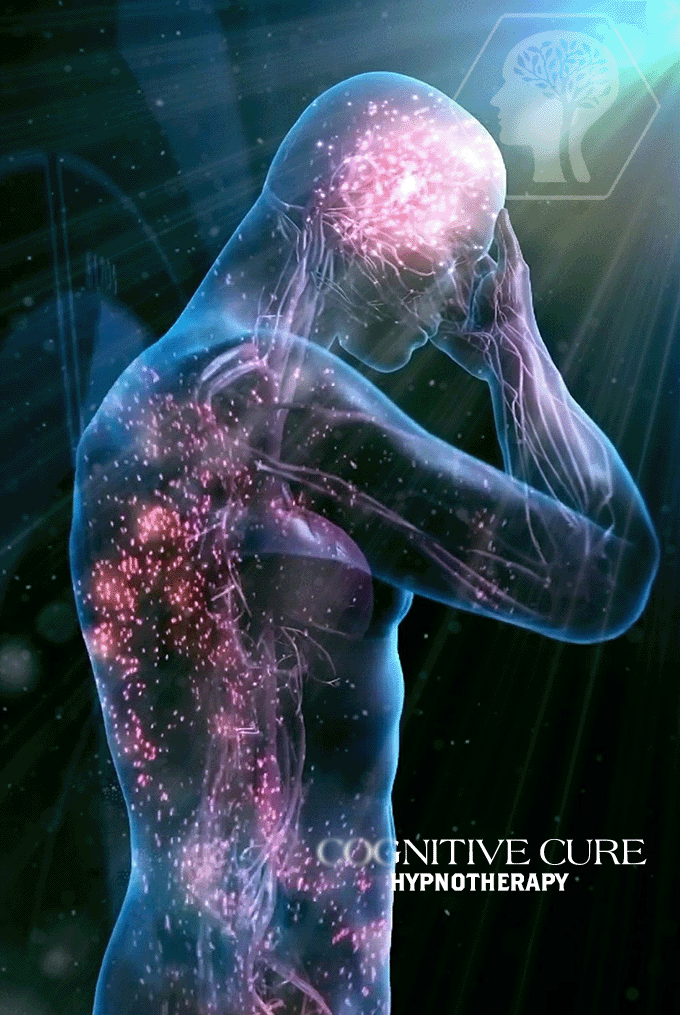
HEALTHY HYPNOSIS
Hypnosis is a powerful mind-body tool that’s been studied for its effects on health, including the immune system. Hypnosis helps calm the nervous system and regulate the body’s main stress-response pathway, the HPA axis. Chronic stress often keeps cortisol levels high, which can weaken immune defenses. By guiding the body into a deeply relaxed state, hypnosis can help lower stress hormones and create conditions where your immune system has a better chance to do its job.
For people living with cancer, this can be especially meaningful. Hypnosis has been used in supportive care to help patients manage treatment side effects like pain, nausea, and fatigue. But beyond symptom relief, studies suggest it may also boost immune activity, such as natural killer cell function, and help regulate inflammation—both of which are important for resilience during treatment. While it’s not a cure and certainly not a replacement for medical care, hypnosis can be a gentle, complementary practice that supports overall well-being. Think of it as giving the body a calmer, more balanced environment in which to heal.

…AND SLEEP
Hypnotherapy can be a gentle and effective way to improve sleep, especially for those who find themselves lying awake at night with a busy mind. By guiding you into a state of deep relaxation, hypnotherapy helps quiet racing thoughts, ease physical tension, and create a sense of calm that makes drifting off to sleep much easier. Over time, it can also help re-train your brain to associate bedtime with rest rather than frustration or worry, breaking the cycle of sleepless nights. Many people find that regular hypnotherapy sessions not only improve how quickly they fall asleep but also support deeper, more restorative rest.
A key part of improving sleep through hypnotherapy is also paying attention to your circadian rhythm—the body’s natural 24-hour clock that regulates when you feel awake and when you feel sleepy. One of the simplest yet most powerful ways to keep this rhythm balanced is to get at least 90 seconds of natural daylight in the morning. This quick exposure to sunlight signals to your brain that it’s time to start the day, which helps you feel more alert during the day and naturally sleepier at night. When combined with hypnotherapy, this small daily habit can strengthen your sleep–wake cycle, making it easier to fall asleep at night and wake up feeling refreshed.
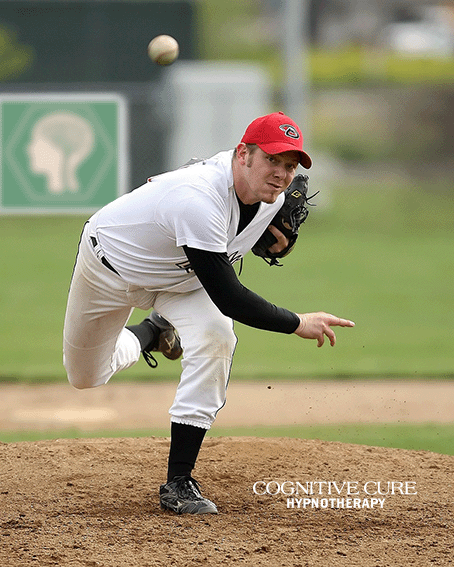
CLIENTS PLAY BASEBALL
There’s a saying in therapy: “the issue is never the issue.” What that means is that the problem someone comes in with—maybe trouble sleeping, feeling anxious, or struggling with confidence—is often just the tip of the iceberg. Underneath, there’s usually something deeper going on, like old patterns, hidden fears, or unresolved experiences that shape how a person feels today. The first thing you notice might feel like the whole problem, but in reality, it’s often a doorway into the real work that brings lasting change.
That’s also what makes therapy such an interesting and rewarding process. Sometimes sessions take unexpected turns, and the conversation goes in a completely new direction. For a therapist, this is where the real skill comes in—being able to adapt, think on your feet, and use different tools to meet you exactly where you are in the moment. Far from being a setback, these twists and turns often lead to the biggest “aha” moments. Therapy isn’t about following a rigid script—it’s about exploring together, staying open, and discovering what’s really at the heart of the challenges you’re facing.

COPING WITH CANCER
Going through cancer treatment is tough—not just on the body, but on the mind and emotions too. Between hospital visits, side effects, and all the uncertainty, it’s easy to feel overwhelmed. This is where hypnotherapy can gently step in. It’s not about swinging pendulums or “losing control,” but rather about using guided relaxation and calming imagery to help the mind find a little peace. Many people going through treatment find it helps ease things like nausea, pain, and trouble sleeping. It doesn’t replace medical treatment, of course, but it can make the journey feel a bit more manageable.
What’s really special about hypnotherapy is how it can also support the emotional side of cancer. It’s normal to feel anxious or scared, but living in that stress every day can be exhausting. Hypnotherapy gives you tools to quiet those racing thoughts, reconnect with your inner strength, and create moments of calm in the middle of the storm. People often describe it as a safe space where they can breathe again and feel a little more in control. At its heart, hypnotherapy is about helping you care for both your body and your mind while you navigate treatment—because healing isn’t just physical, it’s emotional too.

WHAT IS PTSD? HOW IS IT RESOLVED?
(A VERY LONG POST)
My PTSD clients ask these two questions…a Lot!!!
I thought I’d do my best to answer them. I’m not gonna patronise you, I’m gonna give you the full scientific explanation. I don’t expect you all to have biology degrees but it’s good to get a grasp of how your brain works. If there’s anything you don’t understand either look it up or ask me. Thers’s no such thing as a stupid question, ask. Understanding your own sh*t might at least help you cope with it better. Right? Sometimes that’s all you need, instead of constantly asking yourself, “what’s wromg with me?”
Right, pull up a chair, here we go, the science …
The Amygdala: The Alarm System
The amygdala is a small, almond-shaped structure located deep within the limbic system of the brain (actually there are two of them but they perform the same function so it’s easier just to refer to them as a single thing). It plays a central role in the processing of emotions, particularly fear, threat detection, and the initiation of survival responses. During a traumatic event, the amygdala becomes highly activated, rapidly assessing danger and triggering the body’s fight, flight, or freeze response. In individuals with Post-Traumatic Stress Disorder (PTSD), this heightened state of alertness may persist long after the actual threat has passed. This is due to the amygdala’s tendency to encode the emotional salience of the event—essentially, how threatening or distressing it felt—rather than its factual details.
Although it does not store explicit or narrative memory, the amygdala can be thought of as holding onto the emotional “charge” of the trauma. This is why a person may experience a strong emotional or physiological reaction (such as panic or dissociation) in response to a trigger, even if they cannot consciously recall the traumatic memory. These responses occur automatically and without the involvement of higher-order reasoning.
The Hippocampus: The Contextual Integrator
The hippocampus, another key structure within the limbic system, is primarily responsible for encoding and organizing episodic and contextual memories—that is, the “what, where, and when” of an experience. It acts as a sort of filing system, helping the brain understand that a traumatic event is over and belongs to the past. However, during trauma, the hippocampus can become disrupted or suppressed due to the overwhelming stress response. As a result, it fails to fully process the event in a coherent, linear way.
This impairment contributes to many of the classic symptoms of PTSD, such as fragmented memories, time distortion, and flashbacks in which the person feels as though the trauma is happening again in the present. During recovery—whether through psychotherapy, hypnotherapy, or other trauma-focused modalities—the hippocampus is re-engaged. It begins to reorganize the traumatic memory, placing it into a narrative context and allowing the brain to recognize that the danger has passed.
The Cerebral Cortex: Archiving and Meaning-Making
The cerebral cortex, particularly the prefrontal cortex (PFC), is responsible for executive functions such as reasoning, impulse control, self-reflection, and emotional regulation. In a trauma response, the prefrontal cortex often becomes downregulated, which means its ability to evaluate the situation and apply logic is diminished. This allows the amygdala to take over, leading to emotionally driven responses.
As trauma is gradually processed and the emotional charge is reduced, the prefrontal cortex resumes its regulatory function. It helps the individual to reinterpret the meaning of the traumatic experience, integrate it into their life narrative, and store it as a long-term memory within the broader structure of the neocortex. In this way, the traumatic memory becomes less vivid, less emotionally triggering, and more a part of the past than the present.
Integration: From Emotional Reactivity to Narrative Coherence
In summary, trauma initially disrupts the brain’s normal processing system: the amygdala becomes hyperactive, the hippocampus loses contextual control, and the cerebral cortex goes offline. Through therapeutic interventions, this balance can be restored. The trauma is revisited in a safe, supported manner. In hypnotherapy the event is often revisited at a deeply subconscious level without the client being consciously aware of it. the hippocampus reprocesses it, the amygdala’s emotional intensity is reduced, and the cerebral cortex stores the memory as part of a coherent autobiographical narrative. This integrated process is the neurobiological foundation of trauma resolution. Once the trauma has been fully processed the symptoms and behaviours fade as they are no longer necessary.

YOU ARE WHAT YOU EAT
Emotional eating isn’t really about food — it’s about feelings. Whether it’s stress, boredom, loneliness, or even unprocessed childhood patterns, many of us turn to snacks for comfort, distraction, or a sense of control. The challenge is, most of these triggers live in the subconscious, meaning we’re not always aware of why we’re reaching for that extra slice of cake. That’s where hypnotherapy can be a game-changer. By accessing the subconscious mind in a relaxed, focused state, hypnotherapy helps uncover the emotional roots of eating habits and gently rewire how we respond to them.
Instead of relying on willpower (which usually leads to guilt and frustration), hypnotherapy works from the inside out. Together, we can identify the real emotional needs behind the cravings — whether it’s needing comfort, safety, or simply a break — and then create new, healthier responses. With time, emotional eating loses its grip because the brain learns a different way to self-soothe. The result? More peace, more balance, and a healthier relationship with food — no shame involved
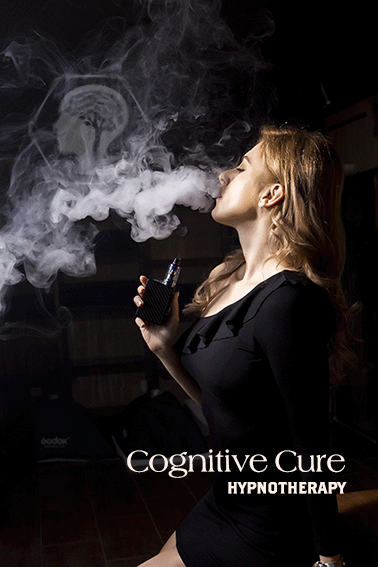
VAPING VICE IS NOT NICE
I’ve noticed an increasing number of people reaching out for help to quit vaping—and hypnotherapy is becoming a popular choice. Many started vaping thinking it was a safer alternative to smoking, but now feel stuck in a habit that’s hard to shake. Vaping can quickly become part of your daily routine, and because it’s made easy to obtain and comes in a variety of flavours, it can feel harmless. But that “harmless” habit often comes with a strong mental and emotional pull. That’s where hypnotherapy can really help—by gently working with the subconscious to change those patterns.
People are also starting to learn more about the real risks of vaping. It’s been linked to breathing problems, heart issues, and even permanent lung damage. On top of that, some vapes have high nicotine levels that will affect sleep, mood, and focus—especially for younger users. But the good news is that you’re not stuck. Hypnotherapy doesn’t just focus on quitting the physical act of vaping—it also helps you shift your mindset and break the emotional connection, making it easier to let go for good.
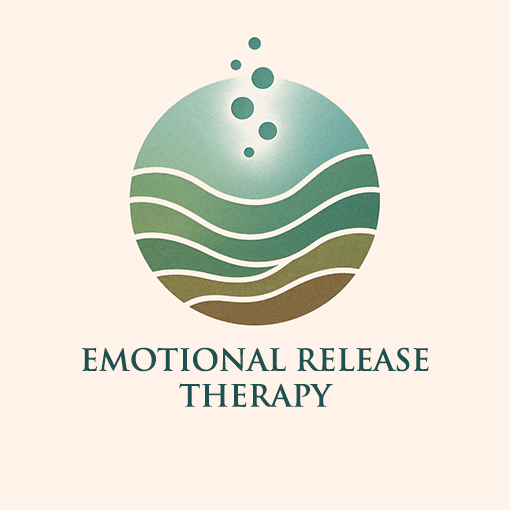
EMOTIONAL RELEASE THERAPY
Last week I discussed the profound impact that can occur simply by letting go of negative Feelings, Images, thoughts, emotions and sensations. I have since been using this new approach with clients for several weeks now and the results are outstanding. This one protocol has changed the way I run my practice. Emotional Release Therapy is truly life changing.

IF YOU ARE FROZEN – LET IT GO!
Letting go of negative feelings, thoughts, and painful memories can create powerful changes in the brain. Thanks to neuroplasticity—the brain’s ability to adapt and rewire itself—releasing old emotional patterns helps reduce activity in areas linked to stress and fear, like the amygdala. This shift allows the thinking part of the brain, the prefrontal cortex, to take the lead, helping us feel more grounded, calm, and in control. As we let go of emotional clutter, we open space for clearer thinking, better emotional balance, and a stronger sense of inner peace.
This emotional release also impacts the body in real and measurable ways. Stress hormones like cortisol begin to drop, and the nervous system shifts into a state of rest and repair. Feel-good chemicals like serotonin and dopamine start to rise, lifting mood and enhancing overall well-being. Over time, many people find themselves feeling more creative, more connected to others, and more at ease in their daily lives. Letting go isn’t just a relief—it’s a deep reset that helps the mind and body work in harmony.

THE LEARNING NEVER ENDS
This is a short blog as I am catching up with myself a little.
Last weekend I attended a wonderful course in the city of Glasgow in the heart of central Scotland. I spent two days with fellow hypnotherapists learning the mechanics of a hugely powerful hypnotic protocol.
The creator himself taught us and it was a truly magical experience. We all left the course buzzing with excitement and newfound confidence and drive. I have already used this new protocol with some of my clients with profound results.
In the world of hypnotherapy, the learning never stops but what an incredible journey.
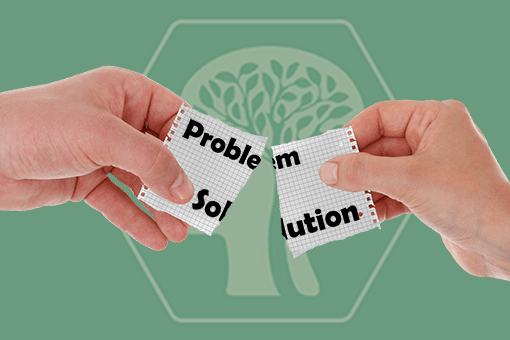
TRUTH ABOUT TRANCE
When most people think of hypnosis, they picture someone clucking like a chicken on stage or falling into a trance with a swinging pocket watch. It’s no wonder there are so many myths floating around! One of the biggest ones is that hypnosis takes away your control—that you’ll be under someone else’s power. But here’s the truth: you’re actually in charge the whole time. Hypnosis is simply a state of deep focus and relaxation, where your mind becomes more open to helpful suggestions. You can’t be made to do anything you don’t want to do, and you’ll remember everything that happens during the session.
Another common myth is that hypnosis makes you fall asleep or go unconscious. While it might feel like drifting into a calm, dreamy state, you’re not asleep—you’re just very relaxed and focused. Think of it like getting lost in a good book or daydreaming during a quiet moment. You’re aware of your surroundings, and if something ever felt uncomfortable, you could stop at any time. Hypnotherapy isn’t about tricks or control—it’s about helping you tap into the power of your own mind to make positive, lasting changes.

POSITIVE PRIDE
Pride Month is a time to celebrate identity, authenticity, and the courage it takes to live fully as oneself. In the realm of hypnotherapy, we often help people untangle unconscious patterns shaped by past experiences, beliefs, and societal conditioning. For many LGBTQ+ individuals, those patterns may include internalized shame, fear of rejection, or the remnants of being told—implicitly or explicitly—that who they are is not okay. Hypnosis offers a space to gently rewire those narratives, helping clients reconnect with self-worth, inner strength, and the deep truth that they are enough—exactly as they are.
Hypnotherapy can be especially powerful when working with LGBTQ+ clients, not as a “fix” but as a form of affirmation and healing. In a safe, accepting environment, trance states allow people to access profound self-compassion and release limiting beliefs imposed by others. Whether someone is navigating coming out, gender affirmation, relationship dynamics, or simply the stresses of everyday life, hypnosis can support them in reclaiming their voice and their peace. This Pride Month, let us honor the deep resilience of LGBTQ+ individuals—and continue creating therapeutic spaces where every identity is seen, respected, and empowered to thrive.

PRIDE MONTH
As a hypnotherapist, I hold space for people from all walks of life, and I am honored to support and celebrate Pride Month. This is more than just a time of colorful parades—it’s a powerful reminder of the importance of visibility, acceptance, and self-love for LGBTQ+ individuals. In my practice, I offer a safe, non-judgmental environment where all genders and sexual orientations are welcome, seen, and valued. Healing begins when we are allowed to show up as our true selves, and everyone deserves that opportunity without fear of discrimination or misunderstanding.
Pride Month also serves as a critical opportunity for education. It challenges outdated beliefs and helps dismantle prejudice, one open heart at a time. By learning about the rich history and ongoing struggles of the LGBTQ+ community, we foster empathy and build stronger, more inclusive communities. Whether in therapy or in daily life, embracing diversity leads us closer to a world where everyone feels worthy, whole, and free. Let’s continue to listen, learn, and uplift each other—not just in June, but every day.
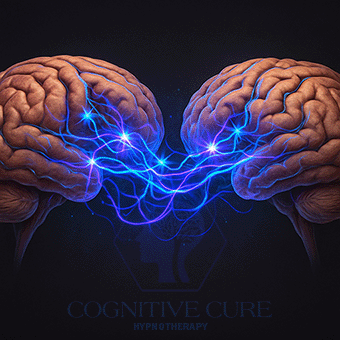
MORE THAN RAPPORT
Establishing strong rapport between therapist and client is fundamental to effective therapy. This connection fosters a safe and supportive environment where the client feels seen, heard, and validated—essential components for growth and healing. Trust allows clients to open up about vulnerable topics and explore difficult emotions without fear of judgment. When rapport is strong, the therapeutic alliance becomes a collaborative partnership, increasing the client’s engagement, motivation, and confidence in the process of change.
Importantly, rapport is not built solely with the client’s conscious mind; a skilled therapist is also engaging the subconscious. The subconscious holds deep-rooted beliefs, emotions, and patterns that often drive behaviours. Subtle cues—tone of voice, body language, consistency, and empathy—communicate safety and acceptance to the subconscious, allowing defenses to soften and deeper work to begin. Building rapport on both levels fosters deeper trust and facilitates transformation that is not only cognitive but felt and integrated.
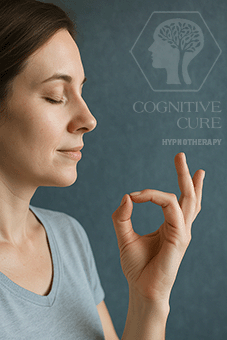
NOT ALL ANCHORS BELONG ON SHIPS
Anchoring in hypnotherapy is a technique where a specific stimulus—like a touch, word, or image—is linked to a desired emotional or mental state. For example, a therapist might guide a person into a calm, confident state during hypnosis and then ask them to press their thumb and forefinger together. Repeating this pairing creates an association, so that later, outside of hypnosis, the person can use that same gesture to bring back the positive feeling.
This method is effective because it taps into how the brain forms associations, much like how hearing a favorite song can bring back happy memories. Anchoring helps people quickly access helpful states of mind, like calmness during stress or focus during public speaking. When used properly, it becomes a powerful tool for reinforcing positive change and giving clients more control over their thoughts and emotions in everyday life.

PHOBIA FUN
I recently had a client who had experienced quite an extreme panic attack when she encountered a dog unexpectedly as she made her way to work. The client had a fear of dogs (cynophobia) and the unexpected encounter with the dog triggered her panic attack. After a single 40 minute session the client emailed me the next day…
I had to go to the grocery store to get some milk just now. I passed several large and small dogs, my brain now registers them as “a living brown and fluffy bush on a leash.”
…Job done.

SEASONAL HYPNOTHERAPY
Did you know hypnosis could help with hay fever? While most people reach for antihistamines, research is showing that the mind-body connection can play a powerful role in managing allergic reactions. Hypnosis, when guided by a trained practitioner, can help reframe how your body perceives and reacts to allergens like pollen. Through deep relaxation and suggestion techniques, hypnosis may reduce stress-related triggers, lessen symptom intensity, and even help reprogram the subconscious response to allergens over time.

EXCITING TIMES
In November I will delivering a talk at the UK Hypnosis Convention. The UKHC is attended by hypnotists from all over the world and I am honoured and excited to be presenting at this prestigous event.
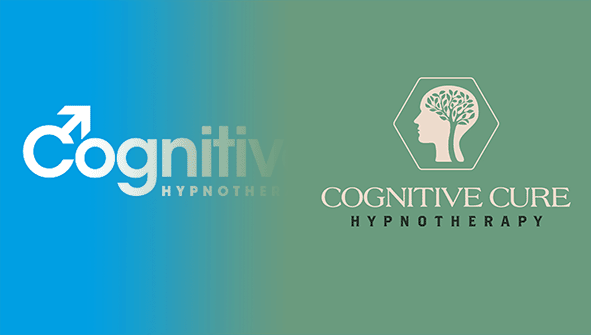
TIME FOR A CHANGE
I’ve given my hypnotherapy practice a brand new look to better reflect my aims and ethos. I hope you like it.

COMING OF AGE
The medical profession is increasingly acknowledging the efficacy of hypnosis and hypnotherapy as valuable therapeutic tools, particularly as research delves deeper into neuroplasticity and its relationship with hypnotic states. Hypnotherapy is gaining recognition and respect within medical circles, as it emerges as a viable treatment option for a diverse range of issues. From managing chronic pain and aiding in smoking cessation to alleviating phobias, anxiety, and PTSD, hypnosis offers a non-invasive and drug-free solution that resonates with both patients and healthcare providers. The acknowledgment of the effectiveness of hypnosis marks a significant shift in the medical community’s perception, with more professionals embracing it as an evidence-based approach to holistic health and well-being.
As research continues to uncover the intricate workings of neuroplasticity, the future of hypnotherapy as a recognized medical treatment appears increasingly promising. Understanding how the brain can rewire itself in response to hypnotic suggestions opens up new possibilities for leveraging hypnosis as a therapeutic intervention. This deeper comprehension of neuroplasticity not only enhances our understanding of how hypnotherapy works but also facilitates the development of more targeted and personalized treatment approaches. With ongoing advancements in neuroscience and a growing body of evidence supporting the effectiveness of hypnosis, it’s likely that hypnotherapy will continue to gain traction within mainstream medicine, offering patients a safe, effective, and drug-free alternative for addressing a wide array of health concerns.
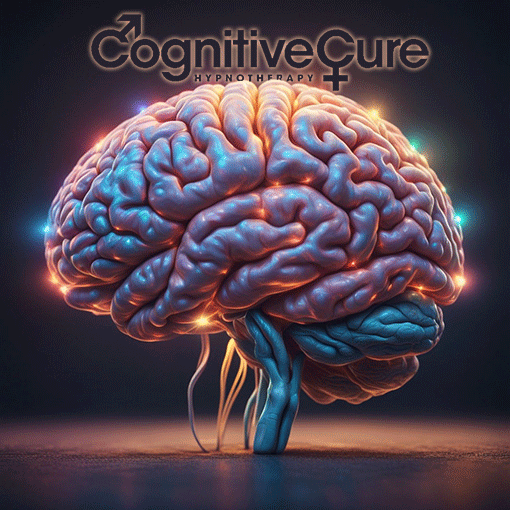
THE FUTURE IS PLASTIC
Neuroplasticity, the brain’s remarkable ability to reorganise and adapt throughout life, forms the foundation of various therapeutic approaches, including hypnosis. This concept underscores the brain’s capacity to undergo structural and functional changes in response to experiences, environmental stimuli, and learning. Through neuroplasticity, neural pathways can be strengthened or weakened, leading to alterations in behaviour, cognition, and perception. Hypnosis leverages this plasticity by inducing a state of focused attention and heightened suggestibility, enabling individuals to access deeper levels of consciousness and facilitate changes in thought patterns, emotions, and behaviors. By engaging the brain’s plasticity, hypnosis can effectively alleviate symptoms of various psychological conditions, enhance performance, and promote personal growth and self-improvement.
Moreover, research suggests that hypnosis can modulate neuroplasticity mechanisms, influencing the brain’s structure and function. Studies using neuroimaging techniques have demonstrated alterations in brain activity and connectivity during hypnotic states, indicating changes in neural networks involved in attention, perception, and self-awareness. These findings highlight the potential of hypnosis as a therapeutic tool for harnessing neuroplasticity to promote adaptive changes in the brain. By harnessing the brain’s inherent capacity for plasticity, hypnosis offers a promising avenue for addressing a wide range of issues, from managing chronic pain and overcoming phobias to enhancing performance in sports and fostering personal development.
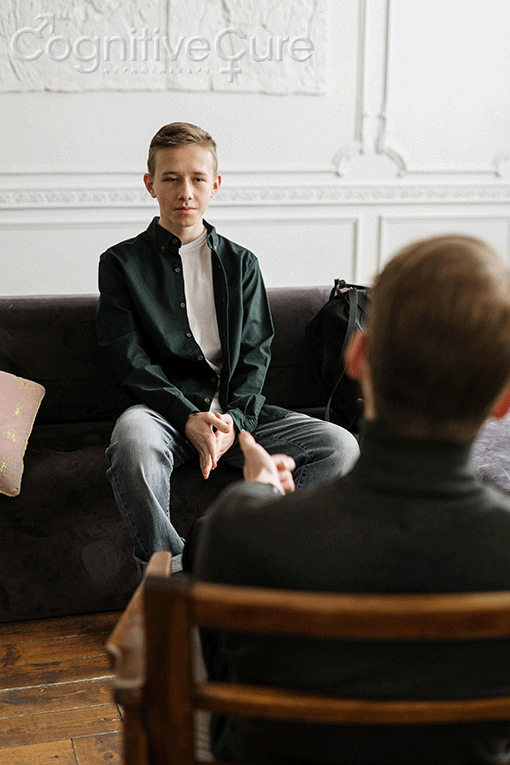
THE BIG QUESTION…
Is online hypnotherapy effective?
Absolutely! Online hypnotherapy packs the same punch as in-person sessions, minus the hassle of travel and waiting around. From my own experience and that of others, there’s been no noticeable difference in results between face-to-face and virtual sessions. In fact, some clients find they’re even more at ease in the online environment, making the experience even more effective!
Research has long shown the effectiveness of online therapies, and studies even before the pandemic have highlighted their equivalence to face-to-face sessions. One systematic review in the Journal of Medical Internet Research confirmed that e-therapy holds its own against traditional methods.
Let’s talk benefits:
– It’s super easy to access, saving you precious time, especially when life gets hectic with work and family.
– You can kick back and relax at home, enhancing the session’s effects without the hassle of commuting afterward.
– Say goodbye to parking headaches and traffic snarls!
– For those who are housebound or medically vulnerable, online sessions offer a safe and accessible alternative.
– And if privacy is a concern, no worries—no one’s watching as you enter a therapy room; it’s just you and your screen.
So, whether you’re balancing a busy schedule or craving the comfort of home, online hypnotherapy is here to deliver results right to your doorstep!

MAKE TIME FOR A MINDSCAPE
I mentioned in a previous post that I had recently completed a Mindscaping course.
Mindscaping, is like a tool kit for exploring and redesigning the secret parts of your mind that you don’t usually think about. It helps you dive deep into your unconscious mind to understand yourself better and make big changes in your life.
To do Mindscaping, first, you relax and get into a calm state of mind. Then, with the help of a therapist, you imagine a map of your unconscious mind where all your thoughts and feelings live. This map is where you can make changes to improve how you feel and think.
The therapist then helps you figure out what changes you want to make and how to make them happen. The cool thing about Mindscaping is that it’s like using your imagination to solve tough problems, but in a safe and enjoyable way.
With Mindscaping, even the toughest issues can be tackled in a way that feels relaxed and fun. It’s a creative way to work through your problems and make positive changes in your life.
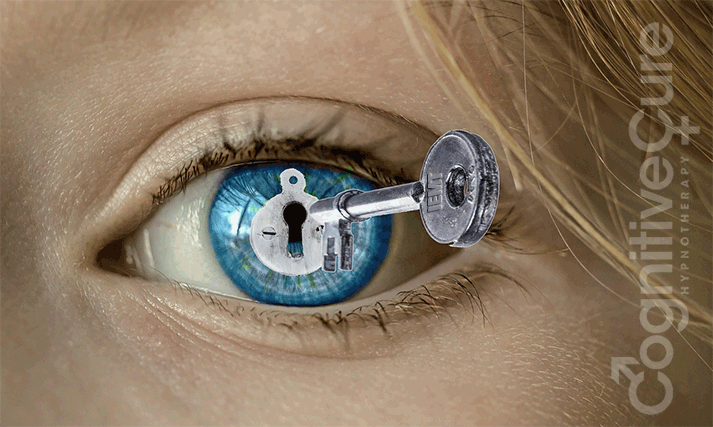
Change Can Happen in the Blink of an Eye
I have been super busy during these last months. I recently completed a course in IEMT and have just finished an online course in Mindscaping. Both of these tools have already poven to be invaluable in my practice.
Integral Eye Movement Therapy (IEMT) is a brief change model that allows the client to disassociate from disturbing memories, address identity issues and reduce the intensity of negative emotions.
IEMT does not work directly on the emotion itself but rather the memory imprints that are causing the emotion. The eye movement techniques and protocol allows the client themselves to accurately measure and assess the changes that are taking place in real time.
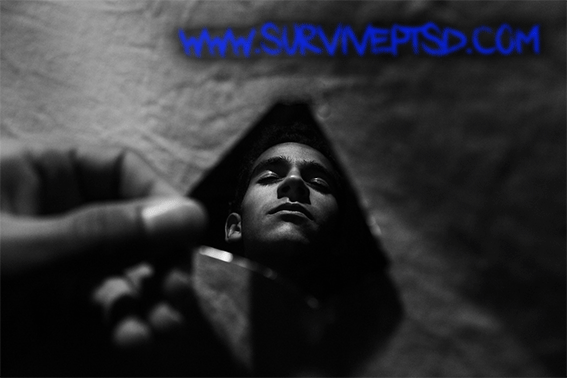
PULLING THE TRIGGER
“When my PTSD is triggered, I become another person”
-Trauma Client
When you experience a traumatic event the subconscious mind creates a new ‘part’ of itself and this ‘part’ has the job of creating a behaviour that will protect you from experiencing this trauma again. It’s impossible to predict how or when this behaviour will manifest itself. Complex traumas can result in a complex set of behaviours with lots of different triggers.
When the subconscious encounters a situation that it associates with the trauma the subconscious ‘part’ takes over, it becomes executive, it runs the ship. All that part knows is to run the behaviours it uses to protect you from perceived danger. The ‘part’ does not consider how appropriate the action or behaviour is. It does not consider the outcome of its behaviour, the subconscious ‘part’ simply acts to protect. Outwardly this will be viewed as a sudden change in personality. Inwardly it will feel like you cannot control the behaviour, which, in essence, is correct. The subconscious ‘part’ is, in that moment, the boss.
Subconscious parts are often referred to as Ego States and in that moment when you are triggered that Ego State takes over. It becomes executive.
The good news is that hypnotherapists can, through the use of hypnosis, communicate directly with the subconscious and with the specific subconscious ‘part’ This is called Parts Work or Parts Negotiation. The hypnotherapist can convince the part to explain its behaviour to the conscious part of the mind (your thinking awareness). Quite often the revelation and comprehension of the root cause of the behaviour is enough to resolve the PTSD. Sometimes the subconscious ‘part’ needs to shown, needs to be told that it’s behaviour is inappropriate or no longer needed. Again once the subconscious part gets the message and understands and changes its behaviour the symptoms of the PTSD disappear.
Do you relate to this description?
In my practice I run a protocol that can resolve PTSD / CPTSD within 4 – 6 sessions.

NEW YEAR BEST WISHES FOR 2024
Wishing all my clients and colleagues a happy New Year.

CHRISTMAS CHEER
Wishing all my clients and colleagues a very Merry Christmas
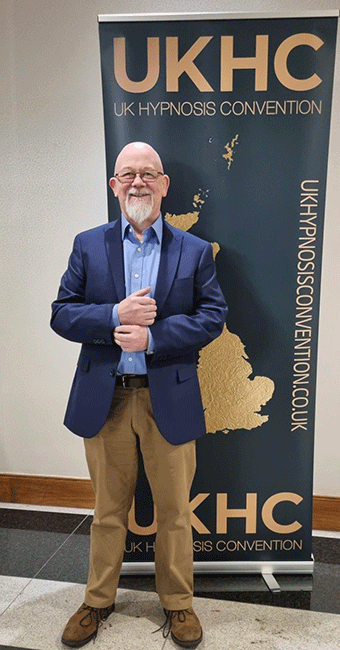
THE GATHERING
Embracing the crisp cool air of mid-November, I’ve recently returned from the 2023 UK Hypnosis Convention in London. This event served as a transformative experience, offering the chance to explore novel hypnotherapy techniques, establish meaningful connections, and draw from inspiring presentations. Across the three packed days, participants were invited to select seven presentations from a daily lineup of 21 speakers, There was a total of 63 insightful sessions throughout the 3 day convention.
The breadth of topics covered was truly awe-inspiring, reflecting the diverse facets of hypnotherapy. Beyond the educational aspect, the convention provided a unique platform for reconnecting with old friends and like-minded therapists from across the globe. This rare opportunity allowed for the sharing of personal stories, intriguing client cases, and the bonding that occurs over shared coffee or dinner.
As a therapist, my journey of learning and self-improvement never ceases, and the 2023 UK Hypnosis Convention has undoubtedly played a pivotal role in fostering my growth and dedication to the field.
No time to rest however, I have clients waiting…
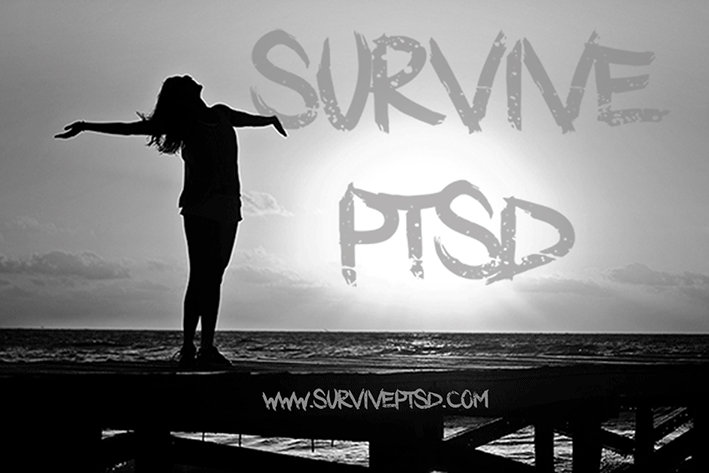
TRAUMA TRAITS
Have you experienced any form of trauma in your life? Are you susceptible to depression, anxiety, or sudden angry outbursts? Do you feel isolated, confused, and disconnected from the world? These are all indicative symptoms of PTSD. If you are struggling to cope with PTSD and recognize these symptoms or have received a PTSD diagnosis from a medical professional, please reach out. It’s possible to overcome PTSD. You CAN survive PTSD. www.surviveptsd.com